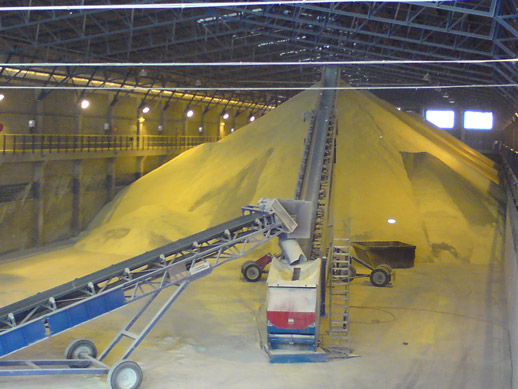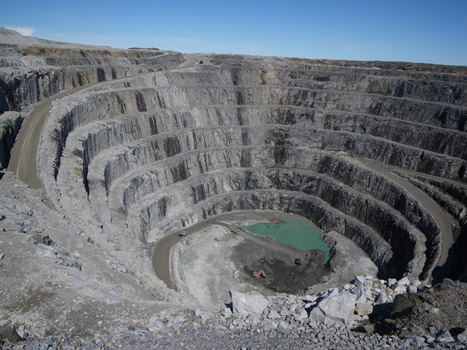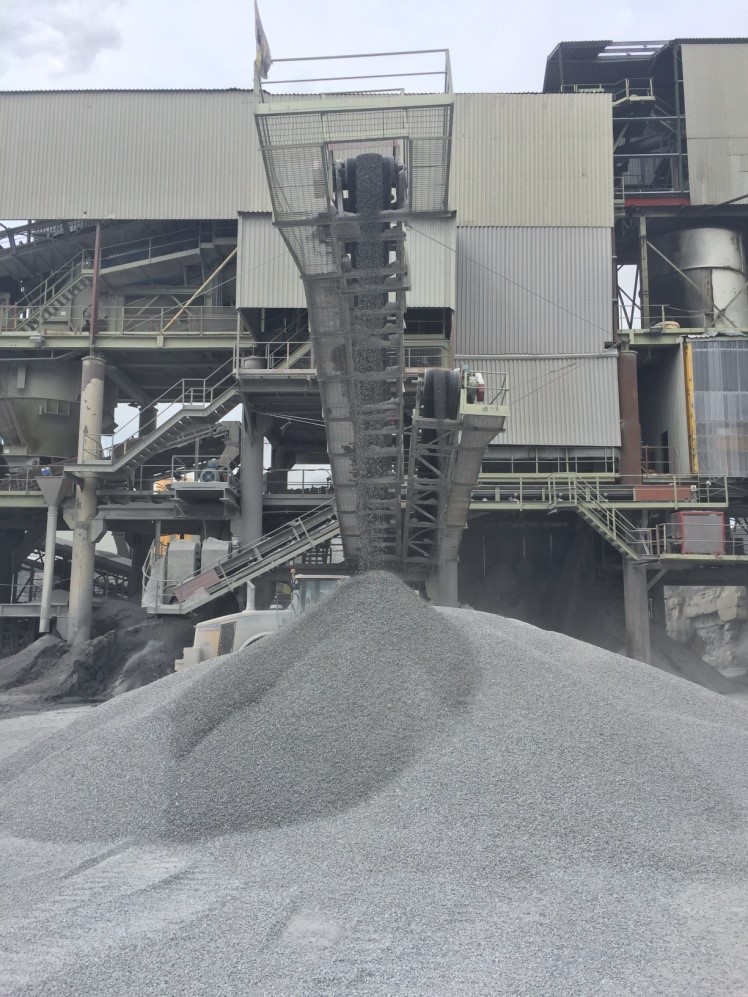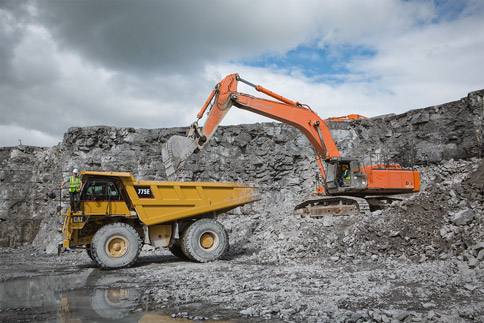A quarry is an excavation or system of excavations made for the purpose of, or in connection with, the getting of minerals (whether in their natural state or in solution or suspension) or products of minerals, being neither a mine nor merely a well or borehole or a well and borehole combined.
The Quarry industry in Ireland is a significant sector of the Irish economy. Though production levels are significantly reduced from those of 2008 there are still a large number of operating quarries and sand pits and the industry is in a good position to expand if there is growth in the construction industry.
Limestone is the most commonly extracted mineral although other types of rock and aggregates are produced. Over 2 million tonnes of finely crushed limestone is used each year to improve lime-deficient soils in many parts of Ireland. Stone, sand and aggregates are used as the main ingredients to produce value added products such as cement, concrete, blocks, pre-cast sections, asphalt, tiles and numerous other products.
Source: Health & Safety Authority: http://www.hsa.ie/eng/Your_Industry/Quarrying/Quarries_in_Ireland
Quarries and the Environment
The quarrying industry by nature is resource-based and results in the removal of rock and soil. By recognising the implications of this, the industry is able to take the necessary steps to ensure that environmental impacts are minimal.
Under planning legislation, Environmental Management Systems (EMS) are in place in each site and monitored by the relevant Local Authority.
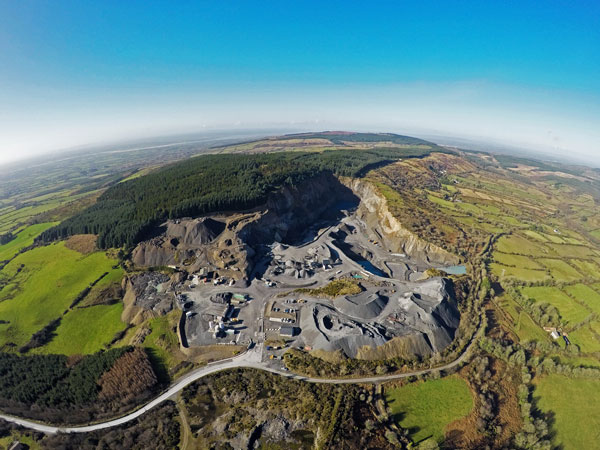
The aim of these EMS are to:
- Mitigate against environmental impacts;
- Raise awareness among management and staff;
- Provide continuous reporting and testing;
- Open communication between Local Authorities and other governing bodies;
- Provide management reviews to strive towards continuous improvement; and
- Promote sustainability.
Internal and external testing or monitoring is the norm across the industry, with standard testing for water, dust and noise.
Some quarries have taken the lead in Environmental Management and received the ISO 140001 Certificate Standard.
Health & Safety Within The Quarry Industry
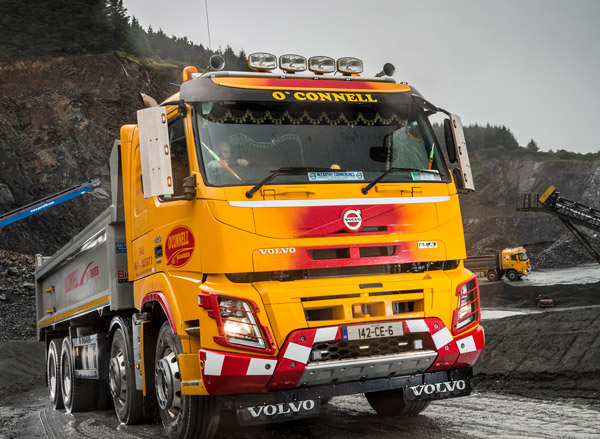
Health and safety is the number one priority in the quarrying industry. Quarry work involves a number of hazards and risk; by identifying these risks, it allows mitigation measures to be put in place to ensure all round safety.
The industry works closely with the Health & Safety Authority (HSA) to continuously improve the industry, for example HAS Site Inspections, Quarry Safety Week and mandatory training for all employees.
Launch of the Quarry Directory GSI Minerals – Active Quarries and Pits 2014(ITM) (4th Edition)
Minister for Natural Resources, Joe McHugh, T.D., launched the new Directory of Active Quarries and Pits in Ireland on Wednesday 5th November, 2014, at the annual conference of the Geological Survey of Ireland (GSI) in Dublin Castle.
GSI Quarry Database is a comprehensive database of active quarries and pits in the R.O.I., periodically updated and available as digital products. The database contains information such as quarry products, location and contact details and production data.
- Information compiled and entered into an Access database
- Sources used as input data for the change /update:
- Questionnaires returned from quarry owners;
- Some coordinates digitised from Google Earth;
- Coordinates converted using OSI GridInquest software.
Siobhán Tinnelly, President of the Irish Mining and Quarrying Society at the time, officiated at the launch. Although the current directory is finalised, the digital version will be reviewed and updated on a regular basis.
Related Resources
- The Mines and Minerals Act Order 1933
- Safe Quarry Guidelines to the Safety, Health and Welfare at Work (Quarries) Reglulations 2008
- Quarrying Code of Conduct
- Guidelines to the Safety, Health and Welfare at Work (Quarries) Regulations 2008
- Excavation FAQs - Health and Safety Authority
- Code of Practice for Operators of Quarry Delivery Vehicles
- Code of Practice for Operations of Quarry Delivery Vehicles
- Code of Practice for Electrical Safety in Quarries
- Code of Practice for Electrical Safety in Quarries
- Client and Contractor Code of Conduct at Quarrying Locations
- CL PL 4 of 2015 SI 320 of 2015
- CL 3-2015 SIs 301 and 310
- Case Study McGraths Limestone Works Ltd
- Blasting Practice in Irish Quarries 1945 - 2008
- Accident & Dangerous Occurrences Reporting
Reference Material
Directory of Quarries & Quarry Equipment – Guide to UK Quarrying & Recycling Industries – New 36th Edition

